I jumped on the Tube and then DLR to visit this center of Time. Oddly enough there was no sign of The Doctor.
First stop was the Maritime Greenwich World Heritage Site which includes the National Maritime Museum, the Royal Observatory and The Queen’s House designed and built in the 1600’s for Queen Anne of Denmark married to James I (formally James VI of Scotland)
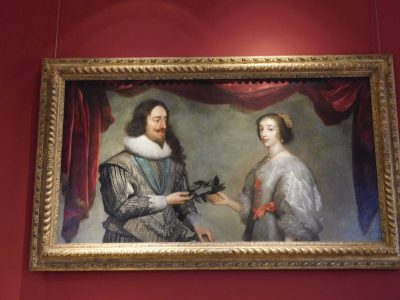
by the great Inigo Jones seen in a self portrait.
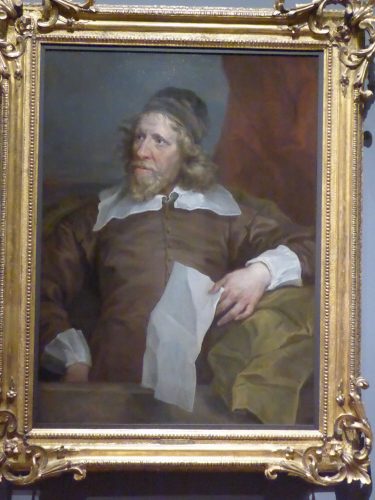
The NMM & Queen’s house and Admin building were once all one residence.
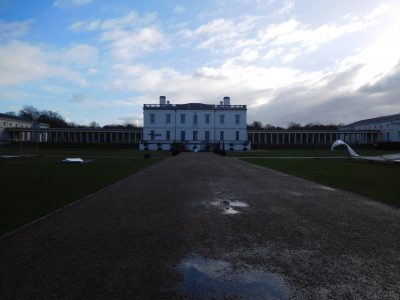
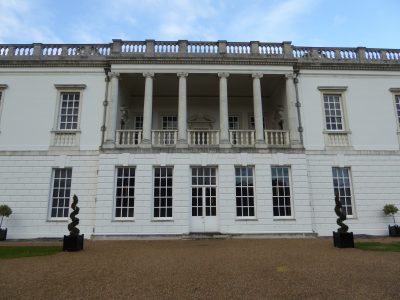
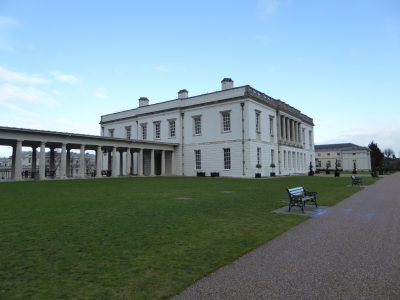
Here is the view looking toward London from the entrance in the first photo.
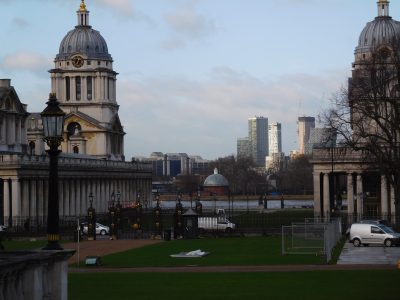
The NMM is the largest such museum in Britain an possibly the world and with the UK’s maritime history this was hardly surprising. I entered with a Sting song in my head after seeing this 15-20′ model of Victory outside the entrance. As a reader might have picked up from my 2015 trip to Portsmouth, I’m a big Nelson fan. Or should I say I am a fan of Vice Admiral of the White, Horatio Nelson, 1st Viscount Nelson of the Nile, Baron Nelson of the Nile, K.B. Lord Horatio Nelson. The good Admiral lost an eye during the Battle of Calvi in Corsica which eventually proved useful in 1801 at the Battle of Copenhagen. He was ordered by signal flag to cut off his aggressive attack by his commander Lord Parker. Nelson lifted the telescope to his useless eye and commented that he saw no orders. His ships the line continued their attack thus winning the day for Britain. Later Parker was recalled and Nelson put in command. This of course is the source of the expression “turning a blind eye”. He also lost his arm on the Spanish island of Tenerife and is therefore easily identified in subsequent sculptures or paintings with his empty right sleeve pinned in place although this painting of him recently promoted to Captain was before the injuries. And no wonder Lady Hamilton was smitten.
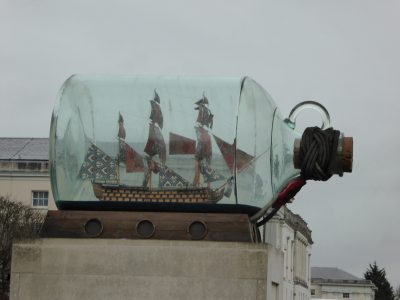
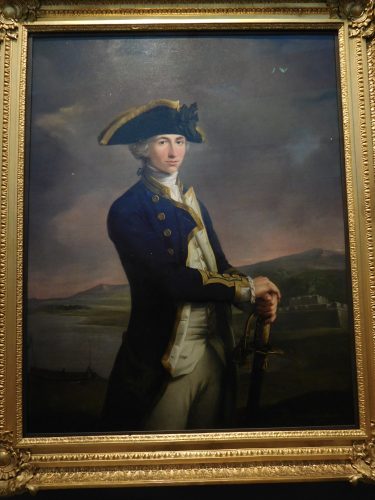
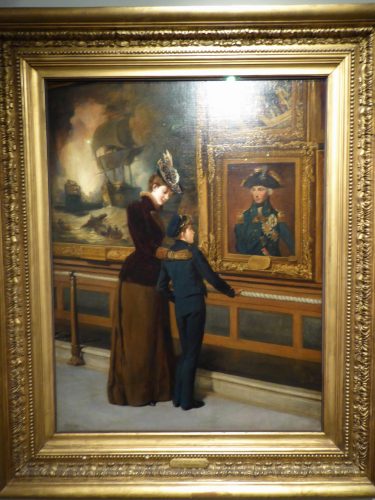
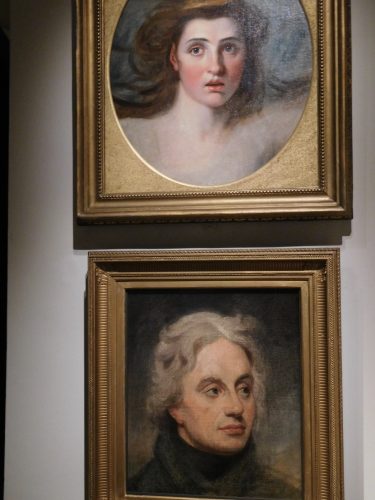
When you first enter the museum two things jump right out at you. The Royal barge and Miss Britain III.
The former is impressive for it’s grandeur while the second oozes speed.
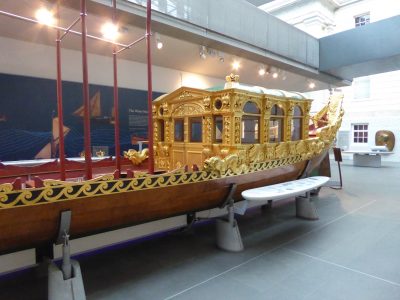
In 1934 Miss Britain III designed by Hubert Scott-Paine, owner of British Power Boat Company, an aluminum clad 1350hp 24′ speed demon set a world record of 110.0mph that lasted 50 years. Notice the location of the rudder.
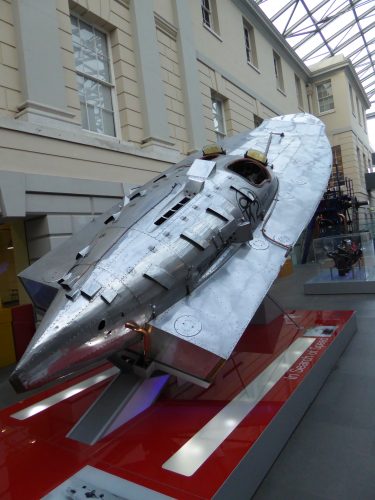
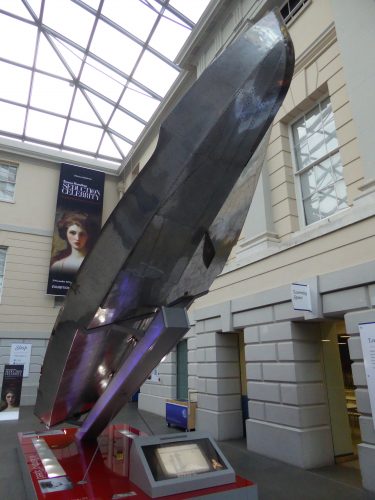
Figureheads.
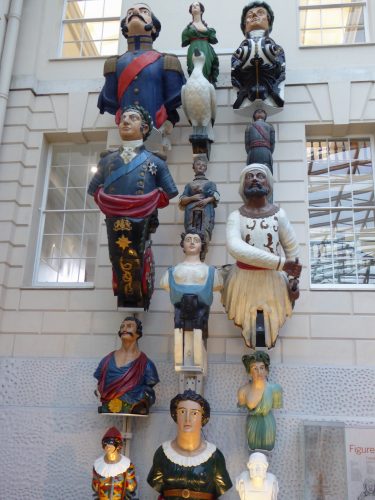 And the drive system for a side paddlewheel.
And the drive system for a side paddlewheel.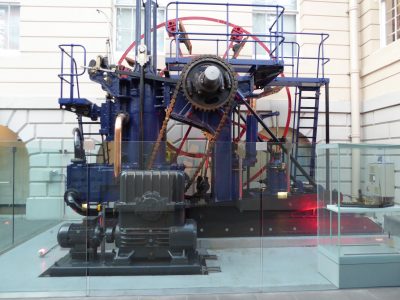
The Royal Navy’s successful efforts in the First World War are well displayed but of all my pictures the one I chose for today’s blog was from the Battle of Jutland.
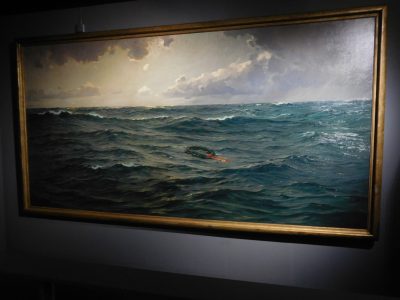
The artist John Dudley Forsyth (1874–1926) was commissioned to design a series of stained glass windows for the Baltic Exchange – a regular meeting place for merchants and naval officers to plan trade missions, to commemorate exchange members who died in WWI. After severe damage in 1992 from an IRA terrorist bombing it was sent to the NMM for refurbishing and display. Stunning.
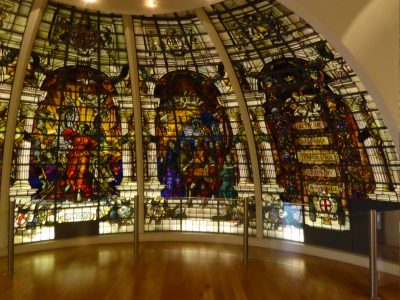
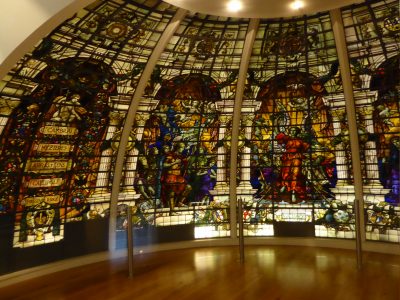
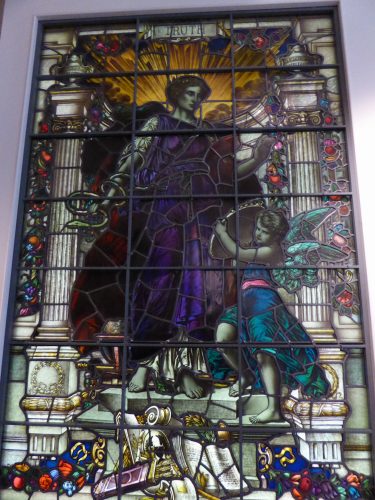
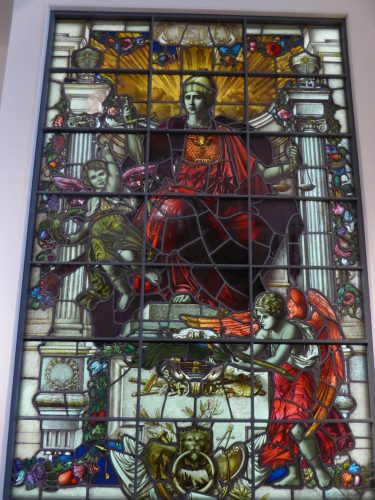
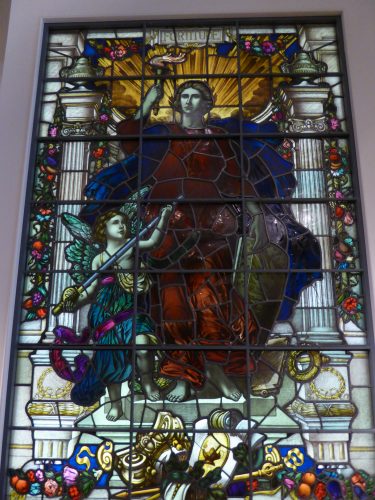
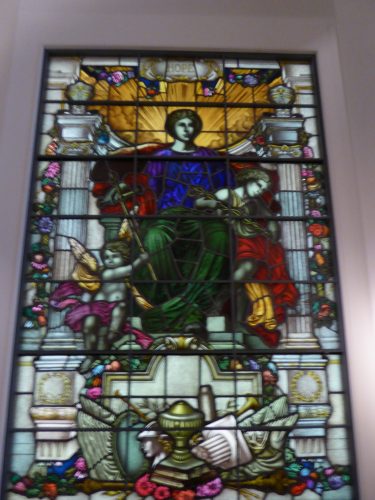
Next door is Queens House where the first thing one sees in Jones’ Tulip Staircase. This was the first time a spiral star was built without a center column resulting in very dramatic views.
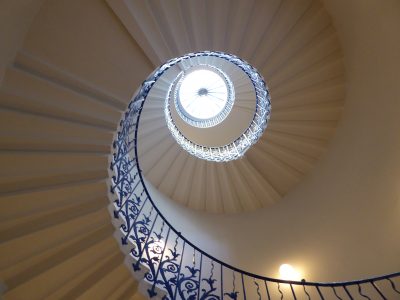 This hall is now a gallery housing many spectacular paintings in a dramatic setting like this former Queen’s bedroom.
This hall is now a gallery housing many spectacular paintings in a dramatic setting like this former Queen’s bedroom.
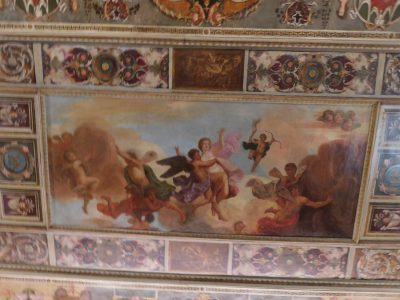
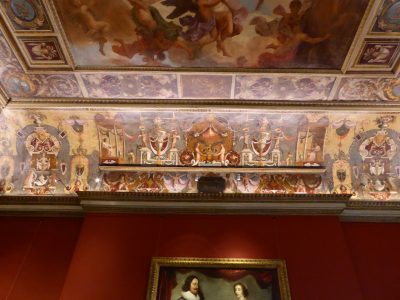
James Cook was the first European to visit the Sandwich Islands (like Columbus I have a hard time labeling someone a “discoverer” when people were already living there). And check out Maguire’s haunting work.
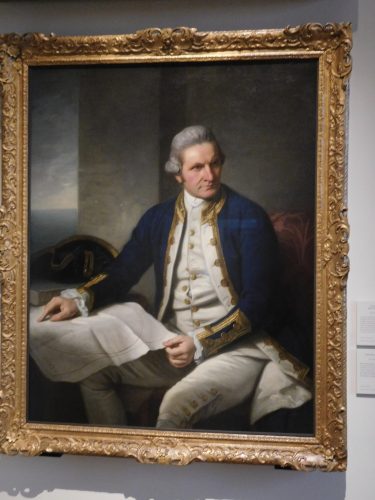
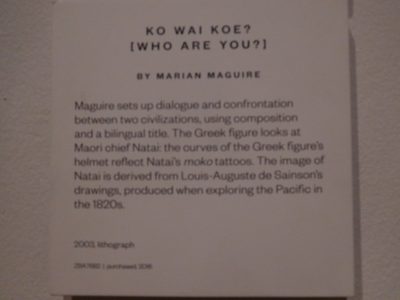
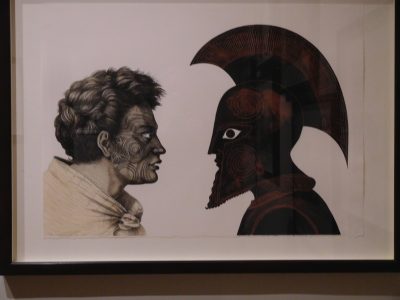
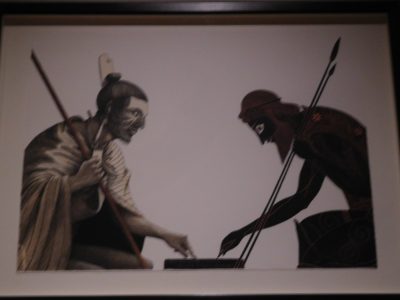
I take over 100 photos a day on the average and it takes time to select and download which to add to posts. One trick I learned a few years ago was to take a pic of the descriptive panels as it is easier than trying to use my tired, old brain or Mr. Google to remind myself exactly what the image or who the author was.
The Royal Observatory was placed on the highest hill in the London area, the site of a former castle and the view was worth the price of admission on it’s own, although the view is technically free.
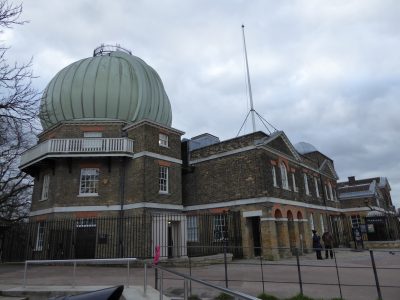
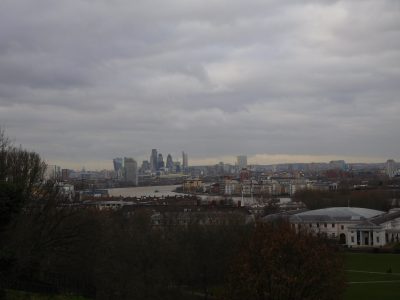
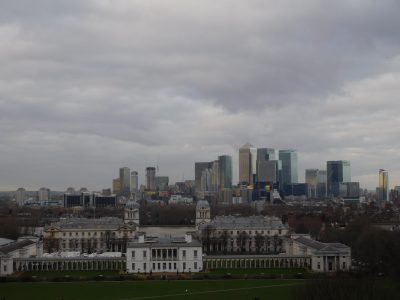
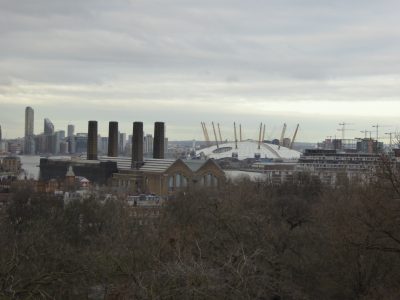
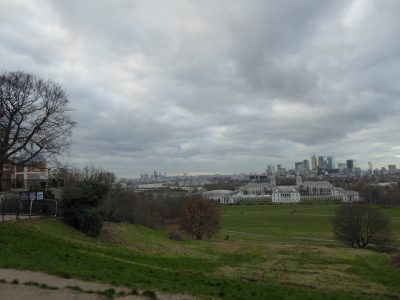
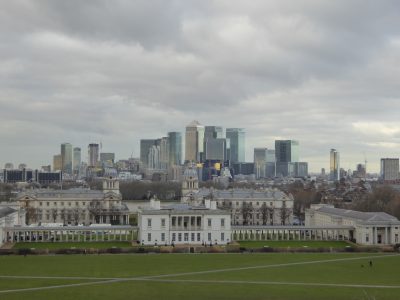
Here is where Time was established. The concept of latitude measured from the equator was known to the early Greeks based on position of stars and sun but longitude was a more complicated problem. If you can’t figure both you can’t precisely plot location. The whole point of the Observatory was to solve the latter. I shall not attempt to explain that now, for that Wikipedia is your best source. I will say that you have to start someplace and you have to be able to accurately track time. That is what the Observatory resolved. People go there (including yours truly), stand on the Prime Meridian and take pictures without really understanding where they are and the why of it.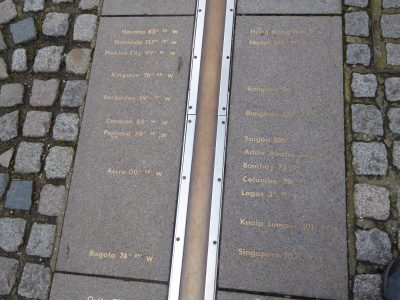
The Observatory explains it all. One of the most important things was to be accurately able to “clock” time. Before this time was local based on the sun but once on a boat the pendulum clock that worked fairly accurately on land failed dramatically on the oceans. So the King set a competition which in today’s dollars was worth millions for the first person who could solve the problem. That person was a carpenter, John Harrison. His first clock was good and large. His last was great and small and took over half a lifetime to resolve.
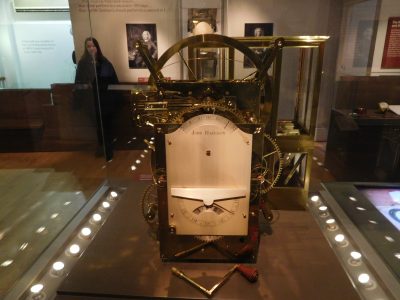
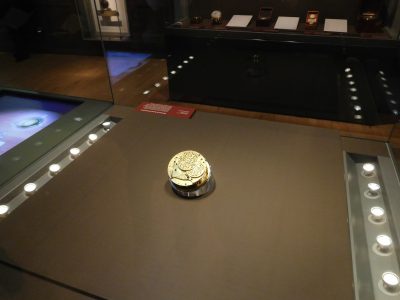
Having taken all my feeble mind could handle between the stops so far described and quite exhausted I was grateful that the next wander was downhill. I could see the masts of the fastest clipper, Cutty Sark, in the distance I decided that being so close, a photo was called for although I had no desire to go onboard having been on varied sailing vessels before.
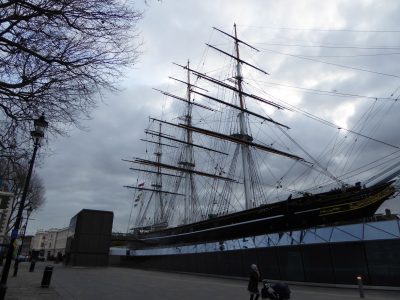
Along the way a bubble blowing busker was yelling at a large group of tourists from China. Something about “you Chinese are all alike”. I cringe at the use of the word “all” as it generally implies a follow-up racist comment but in this case it was just a nutter who must have inhaled too much bubble for when I challenged him he said “All Chinese are alike, they’re from China”. I was muttering that all Americans are alike for the same reason when one of the 50 or so in the Chinese group started chatting and asked for my picture. Why? Well I could only think that with my current look it would be a good photo to send home.
Anyway, after the pics of Cutty Sark I saw a dome building.
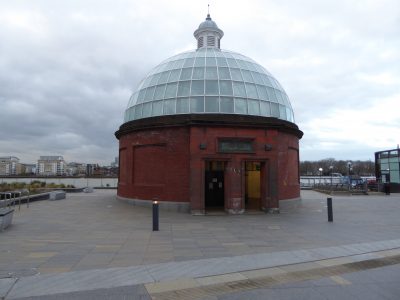 And that led to one of those unexpected surprises one finds if you travel with your eyes open for the next thing I knew I took a lift down and had the opportunity to walk UNDER the Thames! This tunnel was developed so workers in the poorer, south side of the river could get to work without being forced to rely on unreliable ferries in 1902 and is over 1250 feet long and 50 under the river.
And that led to one of those unexpected surprises one finds if you travel with your eyes open for the next thing I knew I took a lift down and had the opportunity to walk UNDER the Thames! This tunnel was developed so workers in the poorer, south side of the river could get to work without being forced to rely on unreliable ferries in 1902 and is over 1250 feet long and 50 under the river.
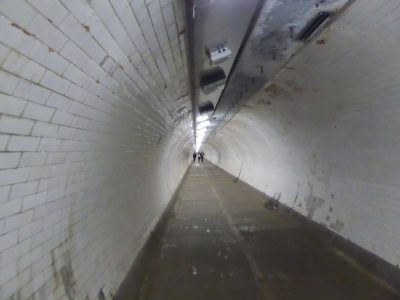
Whilst exhausted and by now nearly unable to walk I came out right at the DLR station which connect to the Tube and the Famous Grouse waiting in my hotel room.
Although the local wimps were complaining of the cold (nearly 40F) I felt that this was a great day.
.
{ 0 comments… add one now }